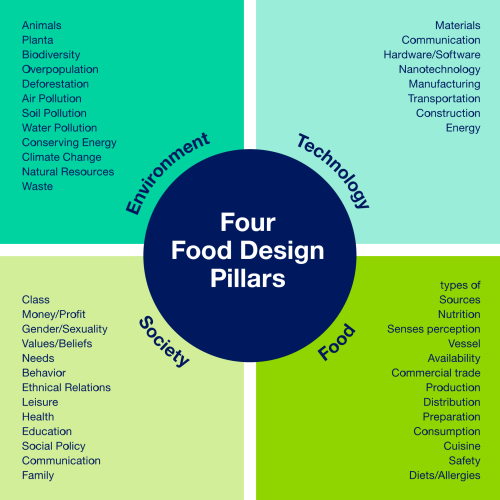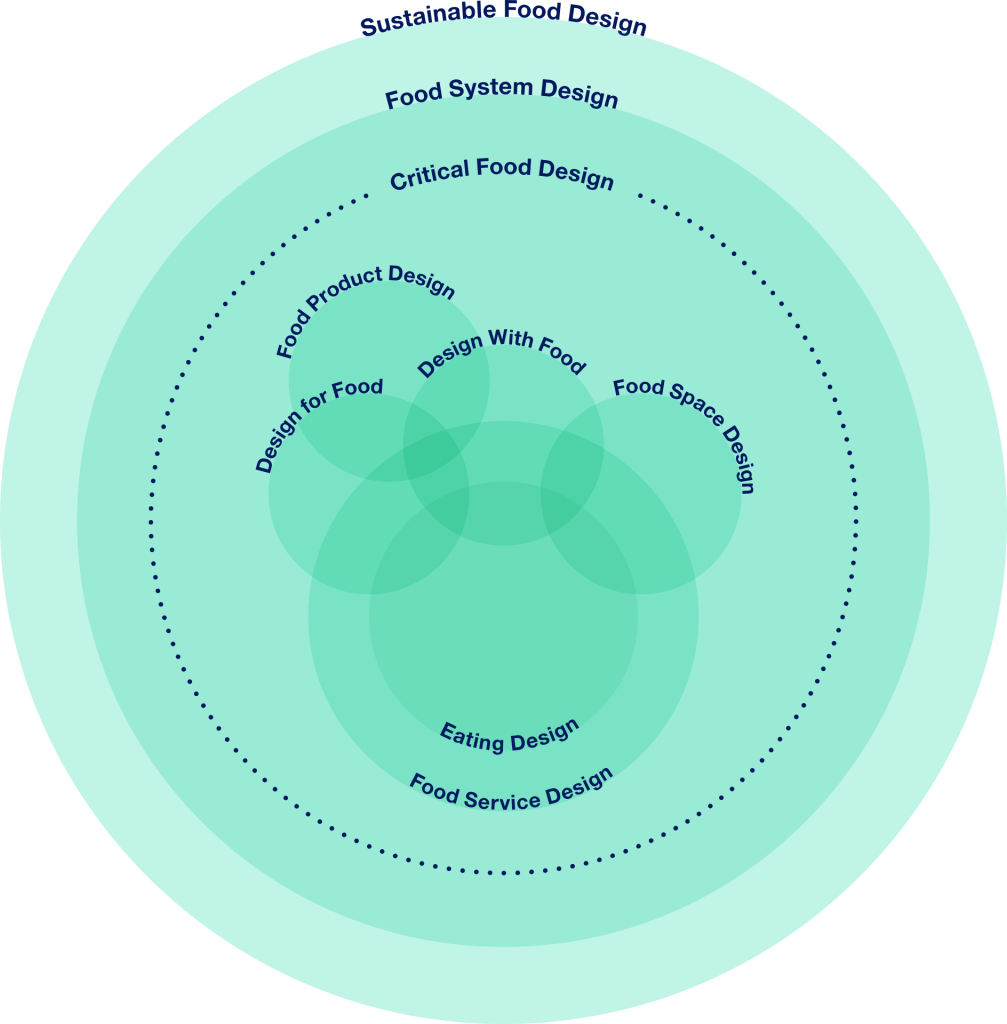Resources
Please find below a curated library of materials and helpful links that may provide helpful references to everyone considering a submission.
Food Design
Food Design is an emergent field of study that recognizes the critical role that food plays in determining our human and planetary health.
The field highlights design processes that lead to innovation for products, services and systems that touch all cycles of food: from production, procurement, preservation, and transportation, to preparation, presentation, consumption, and disposal.
There are many wonderful design scholarship references. You might wish to start with a few recommendations below!
Book Suggestions

Biopolymers for Food Design
Alexandru Mihai Grumezescu, Alina Maria Holban
Academic Press (3 April 2018)
ISBN: 9780128115015
Biopolymers for Food Design, Volume 20 in the Handbook of Bioengineering series, describes how biopolymers have made a major impact in the food industry, from food design, to food control and safety. Biopolymers can be used in the development of novel nutritional alternatives, to replace difficult to obtain food products, or for foods inaccessible or inappropriate for a particular population (i.e. allergic to specific components).
In addition, some polymers can be used as functional ingredients, and can also represent efficient scaffolds for food ingredients with therapeutic values. This valuable reference is ideal for those looking for new solutions for the food industry. Presents common biopolymers and their applications in food bioengineering, from food design, to control and safety Identifies how the use of certain biopolymers can result in faster production time and reduced costs Includes cutting-edge technologies used in research for food design and other food-related applications. Discusses the use of biopolymers in food packaging, shelf-life extension, and the creation of novel food products

Food Design
Exploring the Future of Food
Katja Gruijters, Ed van Hinte
TERRA (2016)
ISBN: 9789089896889
Investigates food culture, providing new ways to think about what we eat* Food designer Katja Gruijters is an important spokeswoman for sustainability in the food industryIn Food Design Katja Gruyters describes the facts of food culture and unveils some of the strange things we are inclined to believe when it concerns eating habits.
Against this backdrop the book presents an overview of food design projects that Katja Gruyters has been working on. With many pictures this design book will feed your mind, and inspire new ways of thinking about ingredients, dishes, meals, and whatever we can use to nourish ourselves, both adequately and enjoyably.
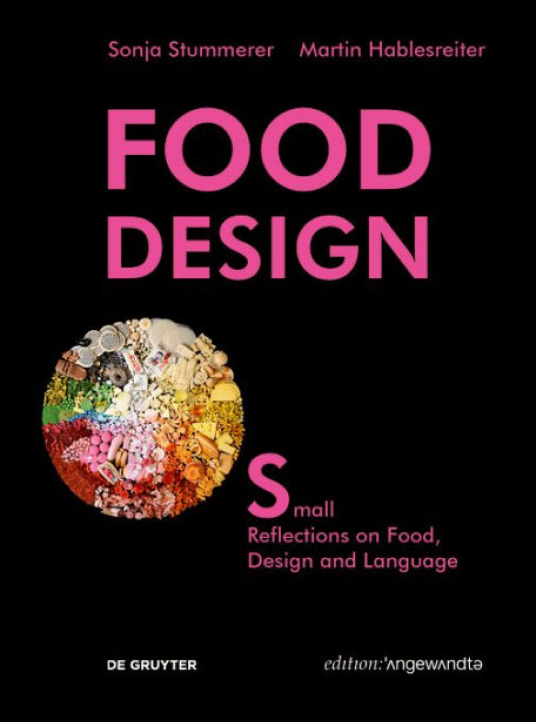
Food Design Small
Reflections on Food, Design and Language
Sonja Stummerer, Martin Hablesreiter
De Gruyter (2020)
ISBN: 9783110679755
More than a thousand times per year, before every meal, people select, cut up, heat, mix and combine, and thus design raw materials and basic products for dishes and foods. What are the steps in the design process of treatment, and how associated decisions proceed from the selection of a food, to defining it as an eating object, all the way to consumption?
This book investigates where the forms of what we eat come from, which factors play a role in their design, and how eating objects also function as signs that convey their contents and meanings. The goal of this book is to expand and reflect upon our knowledge about the origin, content, and meaning of eating objects.

Food Design Thinking
The Complete Methodology
Francesca Zampollo
Independently Published (13 December 2018)
ISBN: 9781791669119
Food Design Thinking is the process that triggers creativity and leads to innovative, meaningful, and sustainable propositions for new dishes, food products, food events, food services, food systems, and anything in between. Food Design Thinking is a food-specific branch of Design Thinking. Ideated by Dr. Francesca Zampollo, it is the answer to the question “How do I design food?”.
This book contains the entire Food Design Thinking methodology, with description and worksheets of all its 52 methods. This book is for chefs, bakers, bartenders, designers, event planners, dinner party enthusiasts, food scientists, activists, and world changers who are looking for food creativity tools to generate numerous meaningful and sustainable Food Design ideas. Francesca Zampollo is a Food Design researcher, consultant, keen public speaker, and teacher. Francesca has a Ph.D. in Design Theory applied to Food Design, she is the founder of the Online School of Food Design(c) (onlineschooloffooddesign.org), and in 2012 she started developing the Food Design Thinking methodology. She is the founding editor of the International Journal of Food Design and the founder of the International Food Design Society. Francesca has organized the first, second, and third International Conference on Food Design, and has taught Food Design and Design Theory at London Metropolitan University and Auckland University of Technology as a senior lecturer.
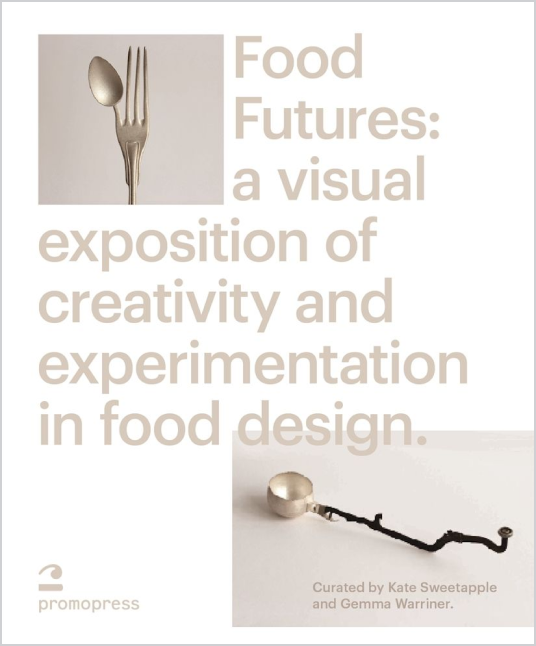
Food Futures
Sensory Explorations in Food Design
Kate Sweetapple, Gemma Warriner
Promopress (2017)
ISBN: 9788416504657
Food Futures is a compilation of unique design projects that act as visual stimulus for designers and food enthusiasts alike, illustrating the possibilities that new technologies open up to designers and the different ways society perceives food. The aestheticisation of food is a growing phenomenon for both designers and consumers alike.
Designers are increasingly identifying food as an object that speaks a global language, as an effective communication medium to visualise and express their ideas.Aside from the role a designer plays in the process of food fabrication, industrial practices too contribute to the alteration of shape, colour, scent and consistency of food, transforming it before our eyes, for our eyes. Food Futures seeks to exist as a stimulating visual collection of experimentation and innovation in food design, posing questions and challenging how we perceive this everyday commodity. Food Futures is structured in three main sections, each of which will encompass design projects appropriate to different categories. These sections will help to shape an understanding of the various ways in which the project has been fabricated and will be titled, respectively, ‘Two Dimensional’, ‘Three Dimensional’ and ‘Multi Sensory’ (experiential). Gemma Warriner is a Visual Communication Designer and educator at the University of Technology Sydney. Her work reflects her interests in information visualisation, food design and brand experience, exhibiting a multidisciplinary approach to design with projects spanning across both print and digital platforms. Gemma’s designs have been and recognised by The Australian Graphic Design Association (AGDA), Graphis, Kantar Information is Beautiful Awards, Adobe and The Dieline.Kate Sweetapple is a senior lecturer at the School of Design (University of Technology Sydney, Australia) who explores the intersection of words and images through exhibitions, installations and printed matter. Her research interests include information visualisation that is poetic/playful; experimental and speculative design practice; and, the role of the designer as a cultural critic and agen
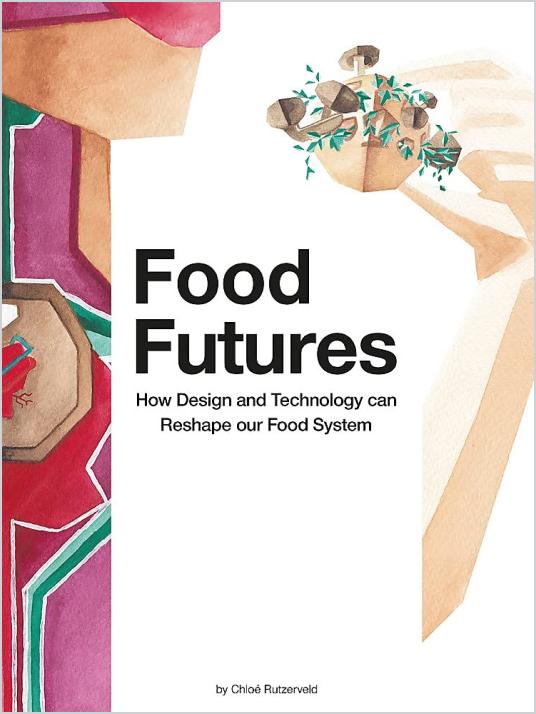
Food Futures
How Design and Technology Can Shape Our Food System
Chloe Rutzerveld
Laurence King Publishing (16 April 2019)
ISBN: 9789063695170
Food Futures will radically alter your ideas about consuming and producing food. Food designer Chloé Rutzerveld questions and explores new food production technologies and translates multidisciplinary research into future food scenarios
This book explains her thoughts, process and work, which is often described as provocative, cheeky and playful – inspiring and involving consumers in the discussion about potential food futures. Follow the conceptualization of completely edible, ‘mini vegetable gardens’ with crispy plants and mushrooms, that become a full meal after being printed by a 3D printer. Engage in a quest for a new eating system in which we digest 100% of the nutrients we take in (instead of the current 75%) by breeding bacteria that are harvested into capsules (that also look, taste ánd smell good). Or get cooking yourself with the recipe for a healthy, typically Dutch ‘stroopwafel’ a recipe derived from her project STROOOP! in which she dives into the natural sweetness of root vegetables. Start exploring, cooking and fantasizing about what we are going to eat in the future.
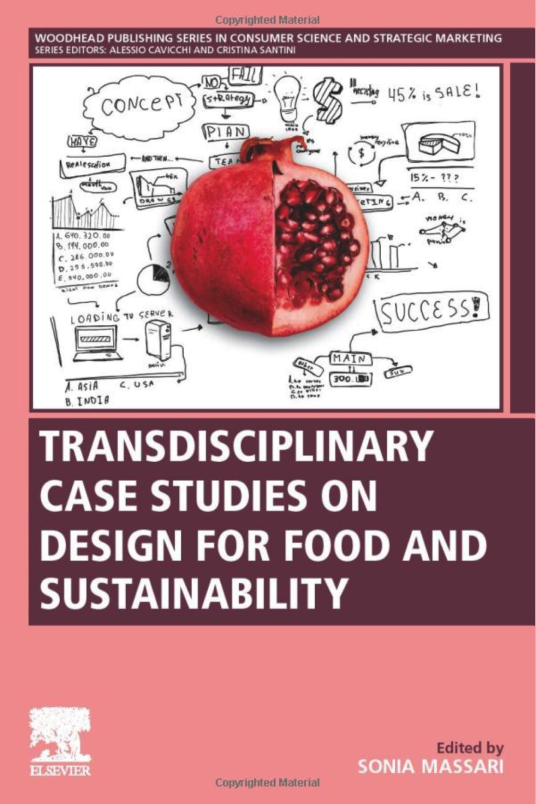
Transdisciplinary Case Studies on Design for Food and Sustainability
Sonia Massari
Woodhead Publishing (25 April 2021)
ISBN: 9780128178225
Transdisciplinary Case Studies on Design for Food and Sustainability, a volume in the Consumer Science and Strategic Marketing series, analyzes the interconnectivity of sustainability, food, and design, demonstrating the presence of food design in various food-related fields of study. Broken into six parts, the book begins with the theory behind food and design.
The following five sections include several case studies highlighting the different forms and applications of food design, including the use of food design in production and distribution, in food and restaurant businesses, in territory-identity, in social food design, and with regard to post-consumption. Using a case study approach to meet the needs of both academics and practitioners, Transdisciplinary Case Studies on Design for Food and Sustainability includes practical examples to illustrate food system challenges, to explain phenomena, and to build theory. Includes practical examples to illustrate food system challenges, to explain phenomena, and to build theory Considers impacts, use assessments, and scalability assets when presenting projects and case studies Addresses practical problems in food design.
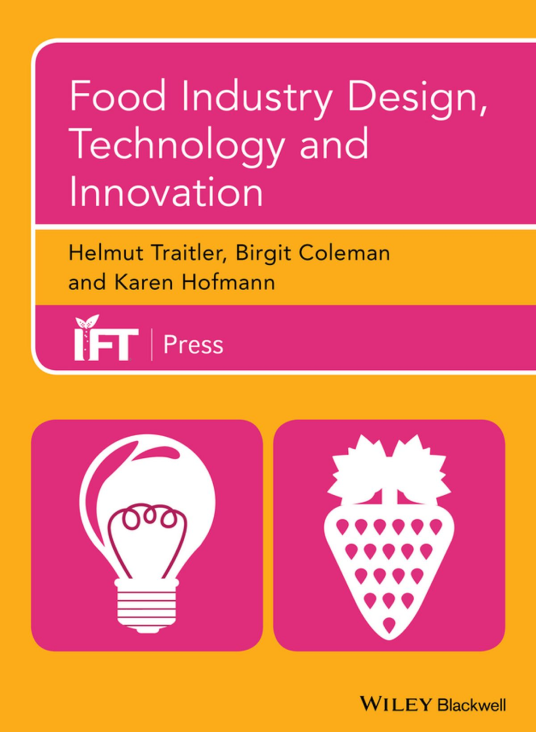
Food Industry Design, Technology and Innovation
Helmut Traitler, Birgit Coleman, Karen Hofmann
John Wiley & Sons (17 November 2014)
ISBN: 9781118733264
Food products have always been designed, but usually not consciously. Even when design has been part of the process, it has often been restricted to considerations of packaging, logos, fonts and colors. But now design is impacting more dramatically on the complex web that makes up our food supply, and beginning to make it better.
Ways of thinking about design have broad applications and are becoming central to how companies compete. To succeed, food designers need to understand consumers and envision what they want, and to use technology and systems to show they can deliver what has been envisioned. They also need to understand organizations in order to make innovation happen in a corporation. The authors of this book argue that design has been grossly underestimated in the food industry. The role of design in relation to technology of every kind (materials, mechanics, ingredients, conversion, transformation, etc.) is described, discussed, challenged and put into proper perspective. The authors deftly analyze and synthesize complex concepts, inspiring new ideas and practices through real-world examples. The second part of the book emphasizes the role of innovation and how the elements described and discussed in the first parts (design, technology, business) must join forces in order to drive valuable innovation in complex organizations such as large (and not so large) food companies. Ultimately, this groundbreaking book champions the implementation of a design role in defining and executing business strategies and business processes. Not only are designers tremendously important to the present and future successes of food corporations, but they should play an active and decisive role at the executive board level of any food company that strives for greater success.
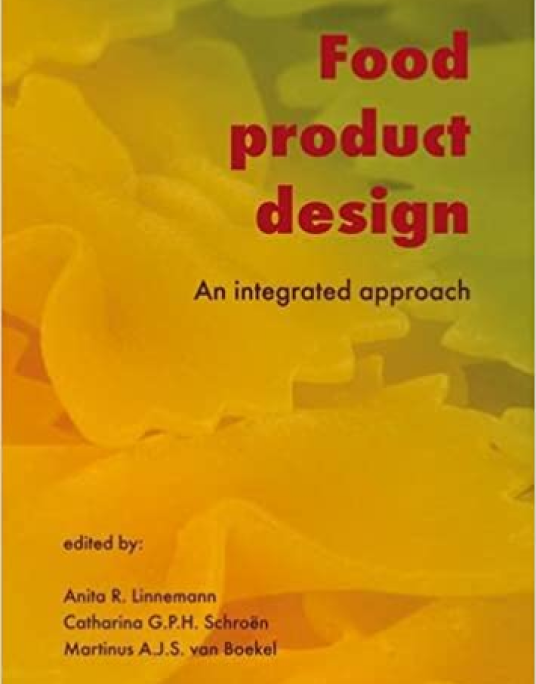
Food Product Design
An Integrated Approach
Anita R. Linnemann, Catharina G. P. H. Schroën, M. A. J. S. van Boekel
Enfield Pub & Distribution Company (2011)
ISBN: 9789086861736
‘Food product design An integrated approach’ deals with food product design from a technological perspective. It presents creative techniques for the innovation process and structured methodologies to translate consumer wishes into product properties based on Quality Function Deployment.
Up-to-date solutions for chemical and physical changes during food processing and storage are discussed. This book explains how to apply barrier technology in food production to improve product stability and the possibilities of modelling and statistics in food product design are elaborated. Attention is given to Life Cycle Assessment as a method to determine the environmental impact of a food from cradle to grave in view of corporate social responsibility of today’s food manufacturers. As proper packaging of food is imperative to maintain product quality, an overview of innovative options and their implications is given. A separate chapter is dedicated to explaining how to manage all the knowledge that is required to successfully design food products. The book is completed by a case study that describes the development of a ready-to-eat meal from a consumer perspective. This edition has been completely revised and includes a new chapter on emulsions and additional information on the other topics. ‘Food product design – An integrated approach’ is aimed at professionals and students in food technology who seek new ways to make food product design more efficient and effective.
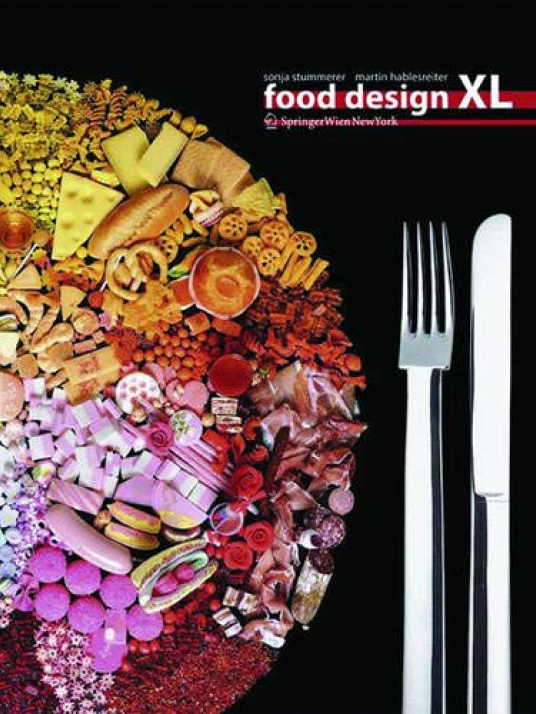
Food Design XL
Sonja Stummerer, Martin Hablesreiter
Birkhauser Architecture (15 October 2009)
ISBN: 9783990433140
Why are pizzas round, and why are fish fingers rectangular? Why do we cut a cake one way and bread another way? “Food Design”, which was published in 2005, gave the first answers to these questions. Now the dedicated authors present, “Food Design XL,” the more comprehensive, larger and bilingual edition of their award-winning work.
“Food Design XL” shows how shape, color, smell, consistency, consumption noises, production methods, history and stories influence food product design. After all, we consciously change the appearance of nature’s edible offerings more than one thousand times a year, before every meal, by cutting, cooking, stirring or combining foods. The human will to design food sets apart from other living creatures. We have all been food designers for thousands of years. This is reason enough to whet the reader’s appetite for this subject with this new XL-format bilingual edition.

Food Design
Paco Asensio
Te Neues Publishing Group (2005)
ISBN: 9783832790530
This book offers a scintillating tour of the world’s most creative food design. Beginning with an overview of the latest trends in food-related product design, this compilation also showcases the best packaging designs, and includes a section on food presentation that features elaborate creations from the world’s most important chefs.
There is also a look at the crucial influence of advertising on food design. This is an invaluable guide for the serious professional. It is also highly recommended for anybody with an interest in mouth-watering food design. ? One of the few books on the market covering all aspects of food design. ? An indispensable guide for everyone involved in the design and marketing of food.

Design to Feed the World
100 projects, 50 schools, 5 topics
Loredana Di Lucchio (Editor), Lorenzo Imbesi (Editor)
ISBN: 8889819480
Design to Feed the World introduces a selection of projects from students, graduates, resarchers, PhDs of schools members of Cumulus, the International Association of Universities and Colleges of Art, Design, and Media. The projects are inspired by the nentral theme of Expo Milan 2015 – “Feeding the Planet – Energy for Life”, highlighting how the culture of design applied to the broad topic of food can open up social, technological, and cultural innovations.
The projects here presented follow five Key Topics: History of Humankind, History of Food; Abundance of Food, a paradox of contemporary time; The Future of Food; Sustainable Food = Equitable World; Taste is Knowledge. All projects lead to interesting new approaches in differnt design fields – such as Product, Communication, Service, Interaction, Exhibit, Interior – and they are described through three formats, such as scale models and prototypes, videos and posters. The volume also collects a critical discussion about the topic of ‘Design for Food’ by the members of the Scientific Commitee.
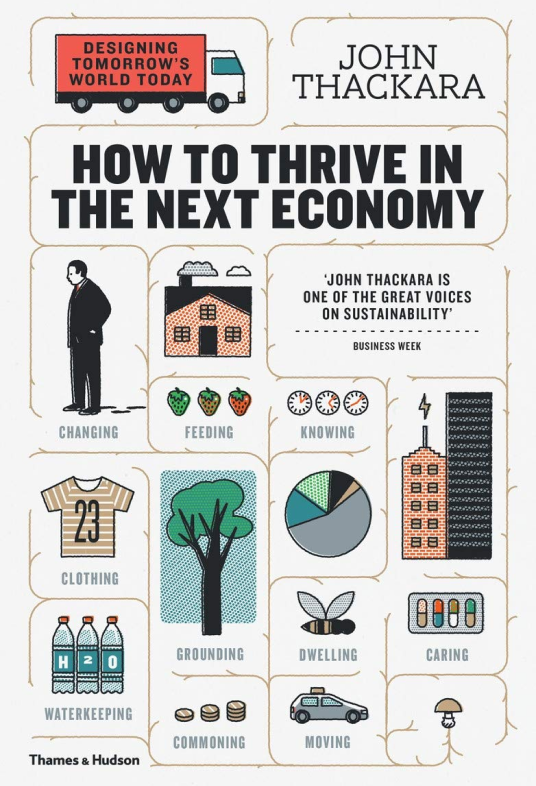
How to Thrive in the Next Economy
Designing Tomorrow’s World Today
John Thackara
Thames and Hudson Ltd; Reprint edition (9 Feb. 2017)
ISBN-13: 978-0500292945
Is there no escape from an economy that devours nature in the name of endless growth? John Thackara’s answer is a rousing ‘yes, there is!’ Drawing on a lifetime of travel in search of real-world alternatives that work, he describes in this book how communities the world over are creating a replacement economy from the ground up.
Each chapter is devoted to the creative ways people in diverse contexts tackle timeless needs. From Bali to Brazil, as well as Delhi, London, and California, Thackara writes of soil restorers and river keepers, seed savers and de-pavers, cloud commuters and e-bike couriers, care farmers, food system curators, Fibreshed stewards, money designers and more. Read together, these encounters add up to a joyful new story about what an economy is actually for. In place of an obsession with stuff, money and endless growth, this book describes social practices that cherish all-of-life, not just human life.
Articles & Publications
UN Food Systems Summit 2021: Science and Innovations for Food Systems Transformation and Summit Actions
Editors: Joachim von Braun, Kaosar Afsana, Louise O. Fresco, Mohamed Hassan
https://sc-fss2021.org/wp-content/uploads/2021/09/ScGroup_Reader_UNFSS2021.pdf

